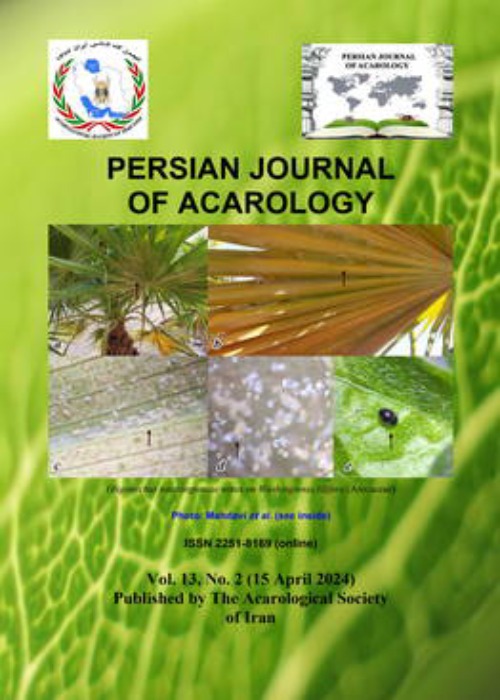Efficacy of Amblyseius swirskii, Neoseiulus californicus (Acari: Phytoseiidae), and acaricides in controlling some pests on sweet pepper in greenhouses
In Egypt, serious piercing-sucking pests such as the western flower thrips, Frankliniella occidentalis, white fly, Bemisia tabaci, the broad mite, Polyphagotarsonemus latus, and the two-spotted spider mite, Tetranychus urticae cause significant yield losses in sweet pepper crop grown in greenhouses. The purpose of this research is to assess the effectiveness of two phytoseiid mites, Amblyseius swirskii and Neoseiulus californicus, as biological control agents for piercing-sucking pests on sweet pepper in greenhouses, compared with chemical acaricides. Three release rates were assessed: 10 adults of A. swirskii/plant, 10 adults of N. californicus/plant, and 7 adults of A. swirskii + 7 adults of N. californicus combined. The highest population density of B. tabaci and F. occidentalis was on yellow ‘Qiuda’ followed by significant damage with T. urticae. Red ‘Grand bell’, on the contrary, was consistently more susceptible to T. urticae and moderately prone to whitefly infestation. Both biological and chemical pest control were efficient in reducing pest populations on sweet pepper in greenhouses. The results indicated that A. swirskii, alone or in combination with N. californicus, was more effective against F. occidentalis, B. tabaci, and P. latus on both pepper cultivars than acaricides sprayed under the same conditions. Moreover, the predatory mite, N. californicus, outperformed A. swirskii and acaricides against T. urticae. Together, the predatory mites, A. swirskii and N. californicus can improve biological control of piercing-sucking pests. The yield increased by 37.4 to 40.0% over the control treatment using the biological control candidates. Furthermore, biological control program resulted in the highest cost reductions for sweet pepper production (35.7–40.7 and 16.2–27.2%) compared to the control and acaricides treatments, as well as a safe yield free of chemical residues.
Biological control , broad mite , IPM , phytoseiid mites , spider mite , thrips , whitefly
- حق عضویت دریافتی صرف حمایت از نشریات عضو و نگهداری، تکمیل و توسعه مگیران میشود.
- پرداخت حق اشتراک و دانلود مقالات اجازه بازنشر آن در سایر رسانههای چاپی و دیجیتال را به کاربر نمیدهد.


